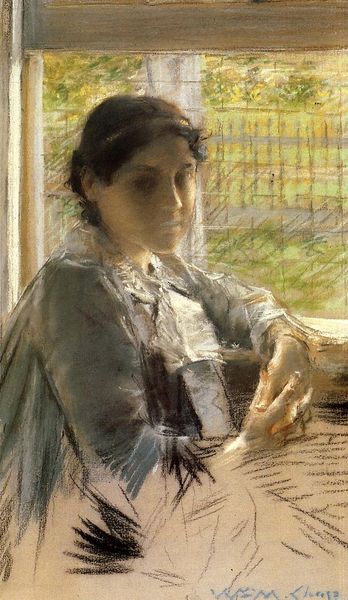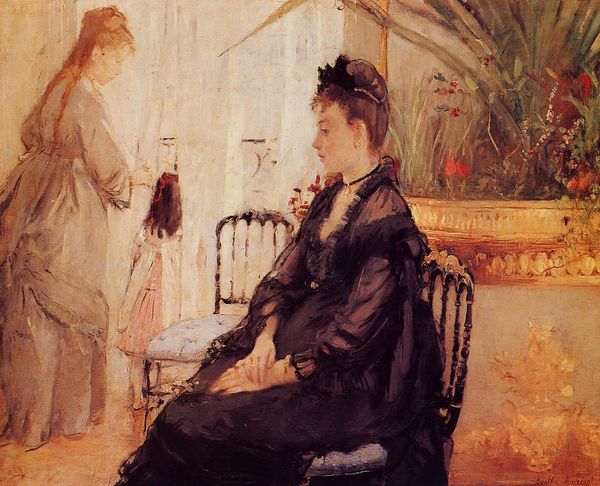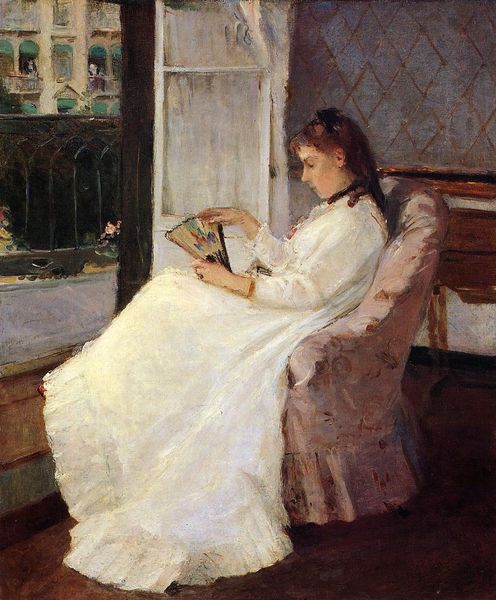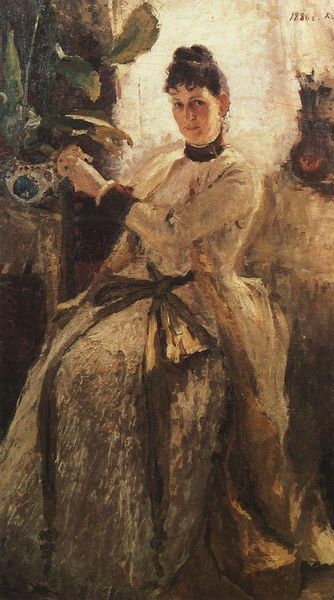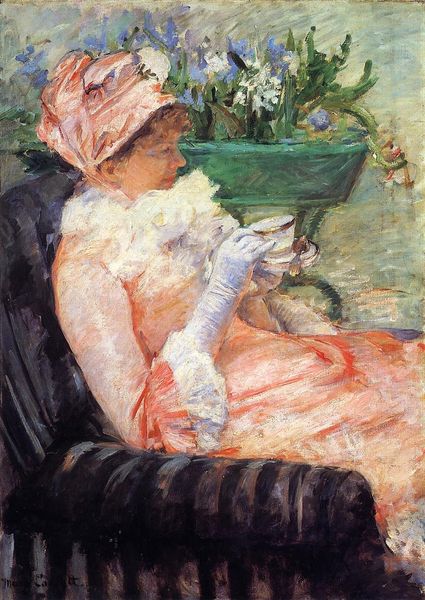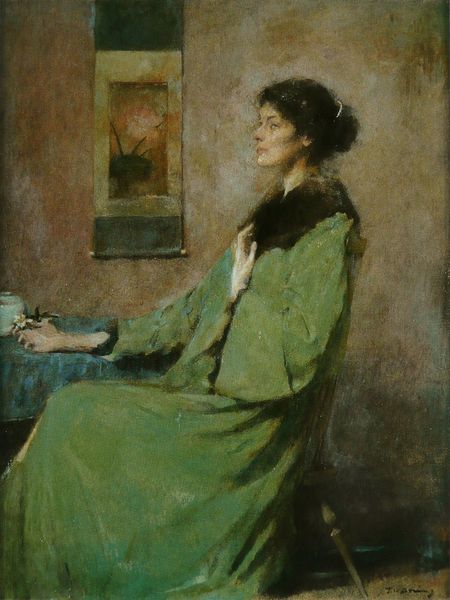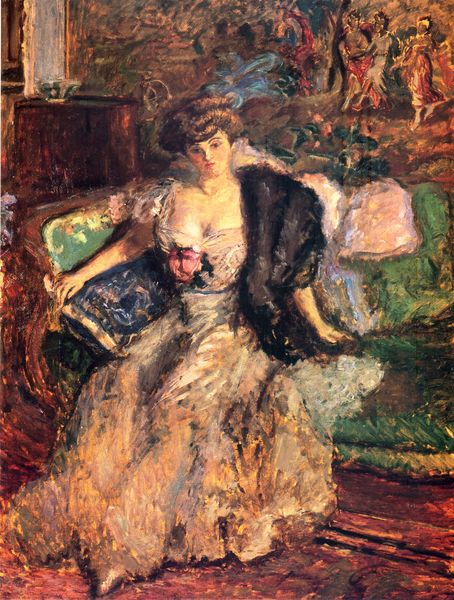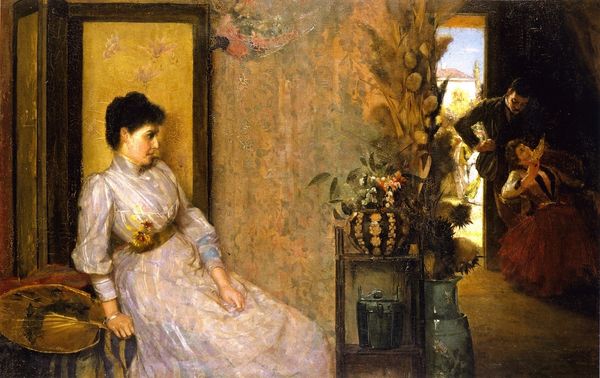
divisionism, painting, oil-paint
#
divisionism
#
portrait
#
painting
#
oil-paint
#
landscape
#
painted
#
italian-renaissance
Dimensions: 151 x 123 cm
Copyright: Public domain
Curator: Umberto Boccioni painted "Signora Massimino" in 1908, an oil-on-canvas portrait rendered in a Divisionist style. Editor: There's an ethereal quality to this work. The light is filtered, diffused. It feels both intimate and distant. The sitter is close, but the painting itself gives the impression of something veiled. Curator: It's a pivotal work in Boccioni’s development, caught between his Divisionist beginnings and the Futurist fervor to come. Consider the societal positioning – a bourgeois woman framed by the interior and the external urban space. Does her stillness imply acquiescence or quiet agency within her prescribed social role? Editor: The window feels so symbolic. The intricate metalwork evokes a sense of constraint. While outside, beyond, a plaza teems with activity. Are we meant to interpret her confinement literally, or perhaps, more psychologically? Her placid reading posture, juxtaposed with the exterior life, seems steeped in the push and pull of domesticity versus modernity. Curator: The artistic roots here, steeped in the legacy of Italian Renaissance art, are grappling with early 20th-century notions of progress and womanhood. She is placed carefully between tradition, reflected in the medium and technique, and the nascent dynamism symbolized by the city's heartbeat seen outside. Her class is undoubtedly performative, given her interior position, removed from public spectacle and manual labour. Editor: I agree, it also prompts considering her emotional landscape. The palette seems muted, reflective. Does her story reside in the gentle symbolism of that bow at her breast? Is she reflecting or escaping? The details almost offer multiple storylines to the patient viewer. Curator: Absolutely. The symbolism creates multiple pathways for interpreting Signora Massimino, as an individual and a cultural artefact. The intersectionality of class, gender, and emerging modernity makes this more than a simple portrait. Editor: A work that holds our attention and rewards our reflection. Its emotional weight persists long after we’ve moved on.
Comments
No comments
Be the first to comment and join the conversation on the ultimate creative platform.

